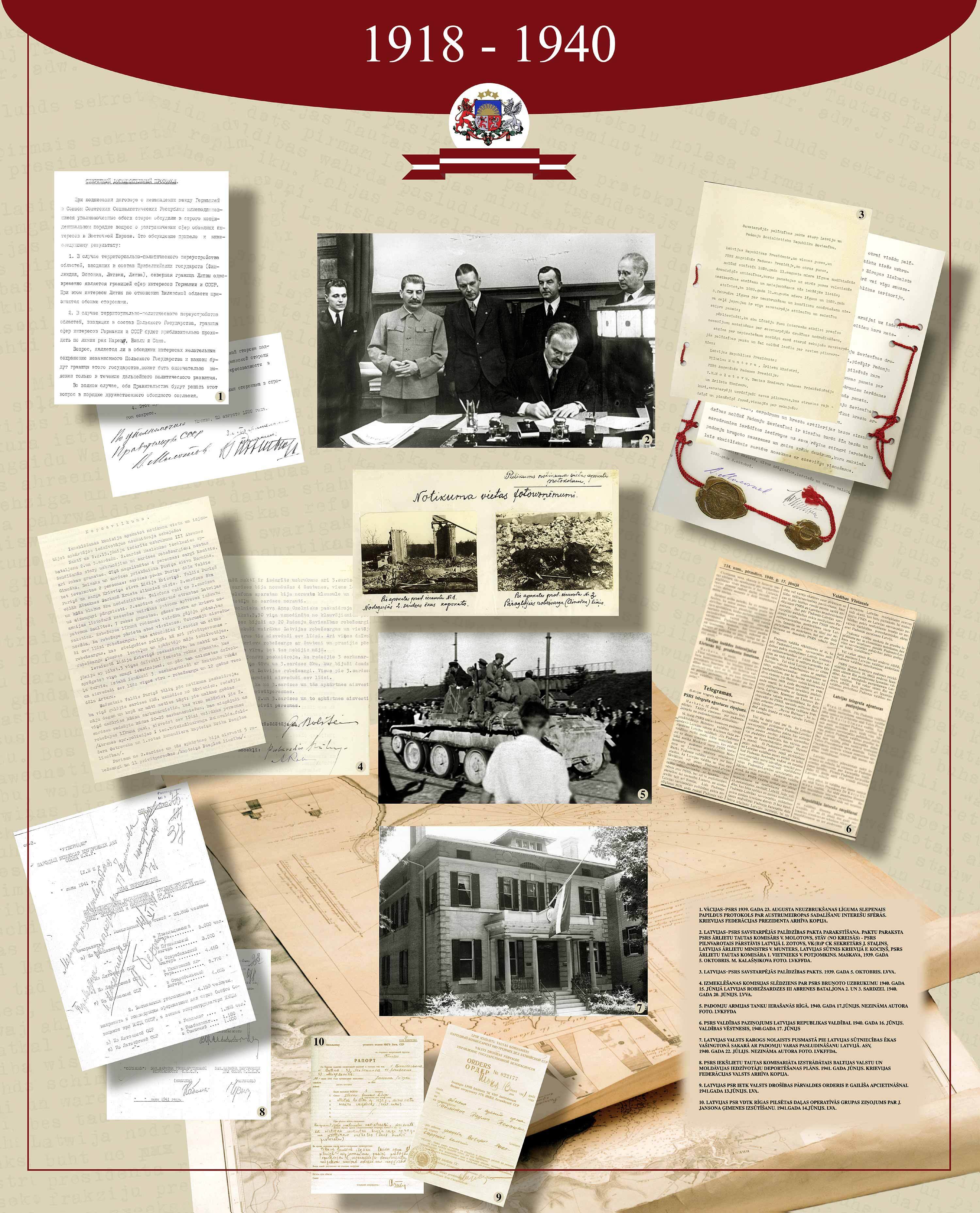Latvia During World War II
Overview
The German-Soviet Nonaggression Pact foreshadowed Latvia's role in World War II. Through this pact, the Baltic States were split up into spheres of influence under the control of Germany and the Soviet Union.
Latvia, forced to sign a treaty in 1939, gave military and territorial control to the U.S.S.R., leading to a new government structure. Soon followed the "Year of Terror" where around 35,000 civilians were deported to prison camps.
From 1941 to 1944, Germany invaded Latvia and formed the Latvian Legion with German and Latvian soldiers. During this time, around 70,000 Latvian Jews were killed in mass genocides.
At the end of 1944, Latvian civilians only made up a third of their country, with the Red Army amounting to almost two-thirds of Latvia.
After World War II, it was obvious that Latvia endured a complete restructuring of its people, economy, politics, and independence. Due to Russification and the divide of Latvians looking to Germany for support, mass deportations and immigrations followed the end of the Second World War.
The film, "Latvian Legion" gives an extensive overview of Latvia during World War II that tells a more holistic, specific, and detailed story than this page is able to provide through documents. Produced by Devini and additional aid from the Ministry of Defence of Latvia, the documentary looks into the events that occurred during World War II and the rampant effects on Latvia's culture, politics, society, and economy.
Below, Peter Aivars explains his knowledge of the start of World War II from his perspective.
World War II and Latvia
The story of Latvia during World War II is by no means an easy one to digest. From the dual occupation of Germany and the Soviet Union to mass genocides, captures, and deportation, Latvia endured extreme turmoil during World War II.
This section provides visual and auditory aids in order to receive a digestible, understandable grasp of what occurred during the Second World War.
The video below covers events from the Non-Aggression Pact, the deportation of Latvians to Siberia, and the divide between Latvian civilians. An important dynamic of Latvia during World War II was the split between Latvians fighting alongside Nazis, Latvians fighting with the Soviet Union, and Latvians fighting for complete independence and freedom. It provides insight into the politics, movements, and laws that controlled the direction of the small country.
During World War II, the Times in London, England covered the worldly events that swooped across the globe. Swipe through the timeline to see newspaper clippings from June 1939 until August 1944. While the sections covering Latvia during World War II are sparse throughout the Times, the records of breaking news highlight the realities of Latvia with the dual occupation of Germany and the Soviet Union. It's important to note that not once was breaking news about Latvia a leading headline in the Times newspapers, but rather smaller updates.
Located in the State Archives of Latvia, this exhibition item provides a compilation of physical artifacts that represent the era of Soviet Occupation in 1940. It includes the Molotov-Ribentrop Pact, which divided the Baltic States between Nazi Germany and the Soviet Union in 1939. Following the scanned document, Soviet tanks are pictured patrolling the streets of Riga, Latvia.
Dr. Harry Merritt highlights his findings on the national shared memory and experiences of Latvians during World War II. Specifically concentrating on Latvian soldiers who served in the Latvian Legion and Latvian Rifle Corp. Dr. Merritt analyzes and examines the "human stories underpinning this history and what it means for greater narratives" of the country.
Listen to "Latvian Units in World War II: An interview with Dr. Harry Merritt" on Spreaker.
